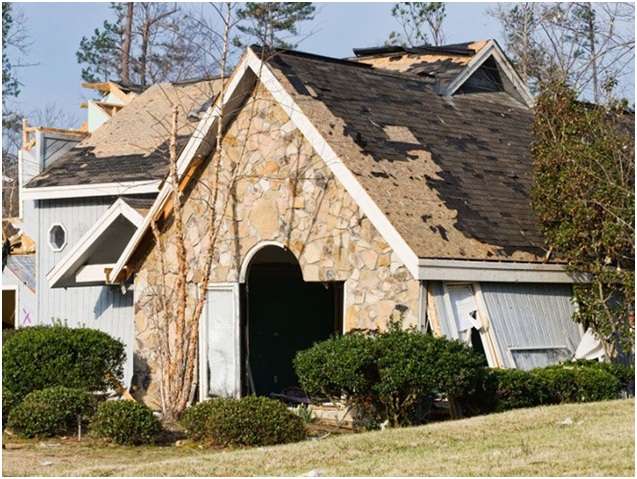All the weather conditions like rain, snowstorms, winds, waves and hurricanes can damage your roof from a small to a very large degree, depending on the extremity of these conditions. Keep reading to find some useful tips to assess and repair storm damages.
If you live in places where storms are very prevalent, then you are aware of all the dangers they pose. This includes very severe damage to the roof that can lead to emergencies. Roofs are not doorknobs that, whenever you have time, can be repaired.
The roof is your house’s cover and needs immediate attention, particularly when the issue is larger in scope. So, make sure to hire residential storm damage servicesbefore it’s too late.
Table of Contents
Here are some tips to assess and repair storm damages.
How to Properly Assess and Repair Storm Damages?
First and foremost, until you are 100 percent sure the storm is gone, don’t try any evaluations. The last thing you want to do is to put your safety at risk by being on the roof when it is still windy outside. Especially when you don’t have proper training for it.
A roof that is destroyed by storms is unpredictable. Also, if you walk on it, it can be very dangerous as it can collapse anytime. Therefore, perform all the tests from the ground because you do not need to be on the roof for simple inspection.
You can spot harm signs from inside the house as you wait for the storm to end. Like leaks and water stains on your walls and ceiling suggest something is wrong up there and needs attention.
Then move the furniture that is directly under them if the leaks and stains are huge and try to avoid certain places in your house for your protection and put a bucket where it leaks to save your floor.
If you find roofing materials, take a look outside your home, because it is fair to assume that some pieces are missing from your roof. For example, shingles can be quickly fractured due to intense storms.
You may assess the condition of exhaust pipes, valleys, and even external edges or angles that connect the roof and the wall without going up to your roof.
You may find greater damage, including cracks or trees that have fallen on your roof, needless to say.
Have a Plan in Place?
The rain doesn’t stop just because your roof has a hole in it. You can get immediate service by contacting a reliable storm damage restoration professional. The organization will board or tarp your roof to prevent any additional water from entering your home.
Check for Damage Indoors
Test it for leaks or water stains if you have an attic. Structural repairs and roofing patches or replacement will likely result in water in your home.
Identify the Damage
Look for missing shingles and linked or missing metal fascia without putting yourself in harm’s way. If you can see your chimney from the ground look to see if there were any metal pieces there, too.
Lastly, look for damage done to areas where the roof meets outside walls of your home, as well as to any exhaust pipes.
Document the Damage
Without causing further damage to you or your roof, take photos as close as you can, and also back up to get pictures of the damage as a whole. Later on, these photos can help with your insurance claim.
Hail Damage Insurance Claim Time Limits Explained
Homeowners have often suffered damages to their roofs over the years, but many are unaware of the time limits on their damage insurance claims. Knowing how long you have to file a claim for wind or hail damage to your roof is essential for the insurance company to replace the roof instead of a roof repair.
However, many homeowners do not file a claim within this time frame and have to pay for the roof replacement out of pocket because they have waited beyond the storm damage insurance claim time limits. Many people don’t even know they have storm damage to their roof. By the time homeowners find out that their roof is damaged, it is too late to file a claim. Waiting too long to file a claim can cause you to pay more money out of pocket.
Talk to a Roof Professional
You would want a true professional available when it comes to assessing damage to help the insurance company evaluate the damage and ensure that all the costs are paid. Although insurance agents may have your best interests at heart, they may not be contractors who are taught.
Damage from storms can cause damage that you may see or not. Your roofing professional will be able to help recognize any secret problems that can relate to your home’s poor structural integrity.
Remove Debris Carefully
If your roof has a tree or large branches nearby, you may want to cut them with extreme care in order to not further endanger yourself or your house. In fact, to reduce the risk of further damage, it is best to let the professionals remove any debris. Professional elimination is done by your insurance provider to keep costs down.
Storm Damaged Trees
After a meteorological event, many people are concerned about the damage suffered and the possible loss of trees.
Assessing tree damage from storms can be a daunting task. However, what many people don’t know is that most trees have their own unique healing abilities, which can eliminate the worry (or need) of any storm-damaged tree repair.
Once power has been restored and safety issues resolved, home and landowners should consider basic steps to ensure their trees and wooded land have the best chance of recovering from damage.
A series of newsletters from Forestry Services and the National Arbor Day Foundation has been designed to provide basic information to consider to help your trees recover.
Hold on to Everything
Keep receipts, either from yourself or suppliers, of all finished tasks. That counts if you are covering a window or filling a void. When filing a claim, your insurance policy can cover reimbursement. This will also help you in calculating the expenses when dealing with a commercial storm damage company.
Conclusion
Reroofing or replacing the old one can be very costly. So, if the damage is large then contact the company immediately and let them know what you found during your inspection.
On the other hand, you should contact a roofing contractor directly if the issues you have found are minor and don’t take much time to be repaired. Don’t try on your own to make lasting fixes, because you can never be sure what the real issue was. Since it will also make the situation worse and replacement would be necessary during the next storm.
The bottom line is that to evaluate and Repair Storm Damages, you don’t have to be a roofing pro, but you need to be a pro to make any conclusions regarding repairs.


















